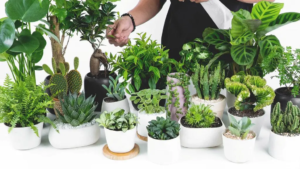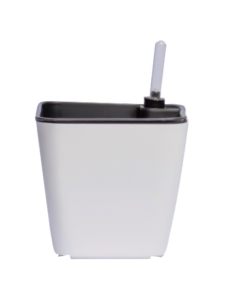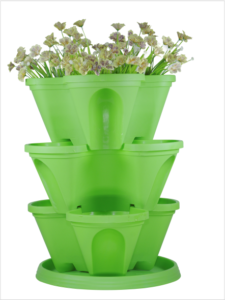1. Choose Light-Colored Pots
Opt for light-colored plastic pots such as white, cream, or light green to reduce heat absorption. Light colors reflect sunlight better, helping to keep the soil and roots cooler compared to dark-colored pots.

2. Cover the Soil Surface
Cover the soil surface in the pot with materials like straw, bark, or small pebbles to reduce water evaporation and keep the soil cool. This layer also protects the plant roots from high temperatures.
3. Move Pots to the Shade
Position the pots in shaded areas during peak sunlight hours, such as under a tree, porch, or using a portable shade cloth. This reduces the amount of heat the plastic pot absorbs.
4. Water Frequently and Properly
Water the plants early in the morning or late in the evening to keep the soil moist and help the plants cope better with the heat throughout the day. Avoid watering during midday when temperatures are high, as the water may evaporate quickly and not be sufficient to cool the plant.
5. Use Self-Watering Pots
Self-watering pots can help maintain the necessary moisture for plants without the need for frequent watering. They also help reduce the pot’s heating as the water reservoir below helps cool the soil.

6. Place Pots on Insulated Surfaces and Insulate the Outside of the Pots
Avoid placing pots directly on hot surfaces like concrete or tiles. Instead, place the pots on stands or insulated surfaces like wood, stone, or use hanging baskets to allow air circulation around the pot.
Wrap the pot with insulating materials like burlap, straw, or sun-blocking fabrics. This helps to prevent direct sunlight from hitting the pot, keeping the internal temperature more stable.
7. Choose Pots with Good Drainage
Ensure the pots have proper drainage holes to prevent waterlogging, which can increase the temperature inside the pot. When water drains out quickly, the soil remains aerated and the temperature stays stable.

8. Use Automatic Watering Systems
An automatic watering system with temperature and moisture sensors will help you better manage the water supply for your plants, ensuring they always receive enough water during hot conditions.

